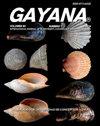智利中部地中海灌丛中strigata Moluchia (Blanchard, 1851) (Blattodea: Ectobiidae)的新记录
IF 0.2
4区 生物学
Q4 ZOOLOGY
引用次数: 2
摘要
尽管蟑螂通常与非病原化的栖息地有关,但大多数蟑螂并不与人类栖息地重叠(Schal et al. 1984, Frank & Lounibos 2010, Maekawa & Nalepa 2011)。据报道,野生小蠊是养分循环和有机质循环的相关参与者(Irmer & Furch 1979; Geng & Cote 2002)。此外,蟑螂是多种生态相互作用的一部分,包括授粉(Bell et al. 2007, Nagamitsu & Inoue 1997, Momose et al. 1998, Vlasakova et al. 2008)。因此,除了具有动物学和进化意义外,这些昆虫还可用于环境监测和凋落物质量生物指标(Gerlach et al. 2013)。本文章由计算机程序翻译,如有差异,请以英文原文为准。
Nuevos registros de Moluchia strigata (Blanchard, 1851) (Blattodea: Ectobiidae) en el Matorral Mediterráneo de Chile Central
Despite of commonly been associated with antrophized habitats, most cockroaches do not overlap with human habitats (Schal et al. 1984, Frank & Lounibos 2010, Maekawa & Nalepa 2011). Wild Blattodea have been reported as relevant participants of nutrient cycling and organic matter turnover (Irmer & Furch 1979, Geng & Cote 2002). Moreover, cockroaches are part of several ecological interactions, including pollination (Bell et al. 2007, Nagamitsu & Inoue 1997, Momose et al. 1998, Vlasakova et al. 2008). Therefore, in addition to its zoological and evolutionary relevance, these insects can be used for environmental monitoring and litter quality bioindicators (Gerlach et al. 2013).
求助全文
通过发布文献求助,成功后即可免费获取论文全文。
去求助
来源期刊

GAYANA
Agricultural and Biological Sciences-Aquatic Science
CiteScore
0.60
自引率
0.00%
发文量
5
期刊介绍:
GAYANA is a scientific journal published by Universidad de Concepción, Chile. It is the modern version of Gayana Oceanología and Gayana Zoología. Therefore its numeration starts at volume 63(1).
GAYANA covers all aspects of zoology and oceanographic research. It is structured in five sections, defined by subject or discipline: Ecology, Biodiversity and Taxonomy, Earth Sciences, Evolutionary, and Applied Biology and Environmental Biology. Each section is in charge of an editor who receives and manages the manuscripts sent for evaluation in close collaboration with the editorial board.
 求助内容:
求助内容: 应助结果提醒方式:
应助结果提醒方式:


